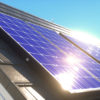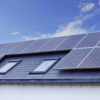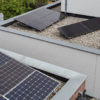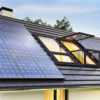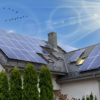While a home’s power consumption is usually used to determine the size of a solar power system, it’s available area is just as, if not more important.
Too many times, homeowners will think they need a powerful system, only to realize their home cannot accommodate that many solar panels. On other occasions, potential buyers may give up on buying a PV system simply because they erroneously think their home is unfit for one.
Part of the reason why such problems persist is because a property’s solar-suitability is determined after an installer has audited the place. Sure, most such audits are free or cost little. But, understanding how your roof’s position determines solar power output can help you set realistic expectations. Not to mention, you’ll have a better idea of what your installer thinks.
Let’s take a look at how roof orientation, angle and area come into play when installing a solar PV system.
Roof Orientation
Also known as azimuth, orientation here means a roof’s position relative to the sun. Roof orientation is the primary component used to design a solar power system. For solar panels to produce maximum output, they need to access as much sunlight as possible.
So, roofs that face north are ideally suited for solar power in Australia. But for someone living in the northern hemisphere, south- facing roofs are a better option.
This brings us to an important question — what if your roof isn’t north facing? Does this mean you can’t install solar panels? Hardly. East and west facing roofs can make great foundations for solar PV systems, too.
It’s important to remember that orientation essentially affects a PV system’s efficiency. North facing roofs produce the highest output, west facing ones produce the lowest.
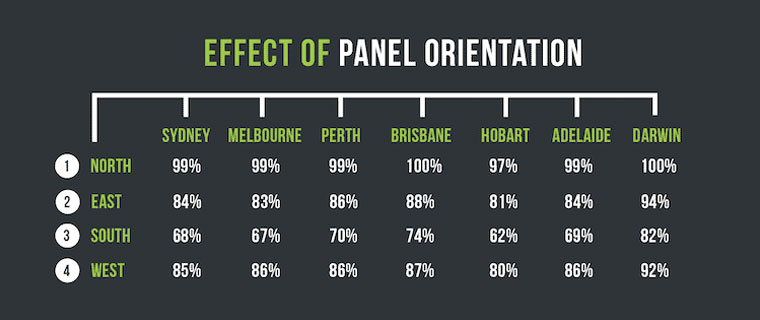
In other words, if your roof isn’t facing north, you may need to install more panels to make up for the loss in output. While it may seem discouraging, there are other ways around the problem, too. For example, if your property has a flat roof or empty land, then either can be used to position the panels northwards.
Roof Angle
Closely following orientation is the roof’s angle, or pitch. The more directly your roof faces the sunlight, the more power your panels produce. The best roof angle depends entirely on your solar objectives and what time of the year you wish to get the best results.
For those who want better performance during the summer months, the roof’s angle should follow the latitude angle of the area where it’s at. So, a home in Brisbane with a roof pitched at 27.5 degree facing north will yield the best possible results.
Things change slightly during the winter months though as the Earth tilts a little on its axis. As a rule of thumb, you should add 15 degrees to your location’s latitude angle to find the best roof winter angle. So, for someone in Brisbane, an ideal winter angle would be 42.5 degrees.

Of course, few roofs will meet either of these criteria. Most homes have a roof pitch between 20 and 28 degrees. However, the panels themselves can be installed at an angle as low as 10 degrees, too. This is to ensure that no debris can accumulate on the panels and they can be washed more effectively.
Roof Area
Lastly, your roof’s surface area will ultimately dictate how much solar potential your property has. The amount of area needed depends on your power requirements, your roof’s type, azimuth and angle.
In Australia, most roofs are of the hip variety, with a tall centerpoint and two slopes receding from it. You can either decide to install panels on just one side of the roof, or both to produce energy throughout the day. The downside is that half of your panels will underperform for half the time.
Skillion roofs are also fairly popular. These roofs have one highpoint and recede from it, kind of like a ski-jump. While hip roofs give you the option to install panels on either side, skillion roofs will either be ideal or not. Lesser surface area will be needed for the panels if the roof is facing north of east compared to those that face south or west.
Finally, if your home has a flat roof, then you can position the panels any side you want. But, you can expect to incur additional costs for designing mounting systems here.
No One Factor is All Important
A solar power system is designed taking all the three (and more) factors into account. Sometimes, the installer has to count on the roof’s pitch to make up for a bad orientation. On other occasions, they may have to get creative with the roof’s surface area.
As Australia’s premier solar search engine, bidmysolar™ can help you figure out how your property’s roof can affect your solar power system design. We can design your solar power system for free using advanced satellite imagery to understand your roof’s peculiarities.
Interested in learning more? Here’s how bidmysolar™ helps you build the perfect solar power system. Feel free to reach out to us if you have any questions.

